 |
Symbolism
The Symbolism of Spring
Christine Fitzgerald
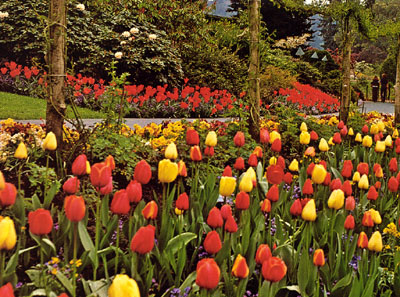
Tulips - one of the first signs of Spring |
There is a season that calls man to pause amid the clamor of noise, the busy agitation of life and invites him to wonder. It is Spring, which is a symbol of the renewal of life and of hope for the future.
Perhaps it is not by chance that Easter, which celebrates the Resurrection of Our Lord, is in the Spring. For with this, everything changed, the winter of sin closed and a new life filled with supernatural grace came to us. Certainly Spring, abounding with natural grace and promises, reminds us of that.
In relation to a man’s life cycle, Spring is compared to the time where he was full of promises, marvelous ideas and lofty hopes, that is, his childhood.
In Winter, all of nature, animals, bugs, trees and flowers sleep. The leaves have fallen from the trees, leaving only brown sticks. Animals have dug holes and are burrowed in.
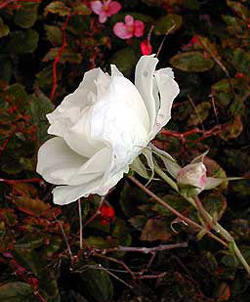
The white rose is linked with the Virgin Mary, who is the Mystical Rose of Heaven, the rose without thorns, and was also a medieval symbol of virginity.
The red rose was said to have grown from the Blood of Christ and is hence a sign of martyrdom and charity.
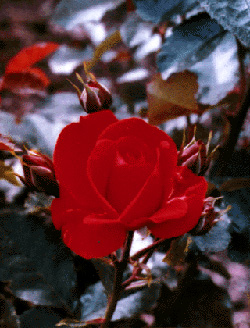
|
The snow has fallen and forms a warm and beautiful blanket over everything. In the life cycle of man, Winter is liked to the fourth and final phase of man’s life, symbolizing old age and pointing to death with its serious aftermath: the Judgment of God each one of us will pass by. All of nature is silent, cold, reverent.
Then, as if an unknown bugle blows, nature slowly wakes up. The daffodils, crocus, hyacinths and tulips peek their heads timidly through the melting snow. What had been an arboreal skeleton of dry, brown sticks slowly becomes a bouquet of green leaves and, in some cases, pink, white, and rose-colored blossoms. These blossoms will later become peaches, apple and pears, in faithful correspondence to a wise and ordered plan.
Other brown sticks somehow know that they must produce not only green leaves but also exquisite, velvety rose petals, hundreds of them, which exude an aura of perfume!
The bees begin to venture out of their hives, their stored supplies of honey depleted. Everything in their hive is in perfect order. They all know their place and their job. The Queen reigns over all. Because of this perfect hierarchical order in the hive, the bee and beehive, often pictured in medieval illuminated manuscripts or on church walls, are said to represent the faithful and the Church.
The nursery bees, the young worker bees tend the larvae inside the hive while other worker bees go out to find the blossoms that provide the nectar to make the honey. Again one can find a symbolism in the hive that relates to the Church, which has her missionaries who go out to all ends of the earth seeking souls in blossom and open to grace, and then bring them to the true Faith. She also has her internal workers, the Hierarchy and religious orders of men and women who tend the flock and strive to make everything more perfect.
The bees are so suited for their job that they can travel up to five miles to locate a field of flowers and then come back to the hive to give directions to other bees by a dance. This dance tells the distance and the location of nectar that they must gather to feed the hive. In the act of gathering the nectar, pollen sticks on their tiny feet and on their next landing, they will pollinate the flower or tree or tomato plant.
They have a sense of purpose about themselves – they waste no time. Nature has told them they have only a season to fulfill their reason for being and they go about it with enthusiasm. For this reason, bees are said to signify vigilance (they were thought to never sleep), and also purity because they feed off blossoms.
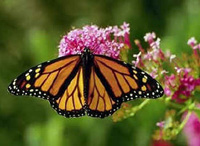
The wings of the Monarch butterfly
appear like stain glass windows.
The common blue butterfly, below,
seem like a rich velvet cloth.
 |
The butterfly, whose wings resemble stained glass windows, hatches first into a caterpillar in a cocoon, and then in Spring breaks out of its tomb and decorates all of the countryside. It is interesting to consider, once again, the symbolism of the Resurrection, this time the resurrection of our bodies at the Last Judgment in end times.
In nature, an ugly and awkward worm “dies” in the cocoon and then it “resurrects” in a new and marvelous shape, the butterfly. The caterpillar signifies the present life, the cocoon is death, and the butterfly that emerges from the cocoon to full glory is a symbol of the resurrection of the body after death.
What purposes have the butterflies if not to dress up the Spring scene? They give such joy to people that many plant butterfly gardens with the hope that butterflies will be attracted there. The beautiful butterflies called the Monarchs, in their black and orange regalia travel all the way from Mexico where they have spent the Winter. It has recently been discovered that all of the Monarch's in North America return to the same place every Winter, some traveling over 2,000 miles.
In my opinion, nothing thwarts the decrepit theory of evolution quite as effectively as the annual drama of Spring where every animal, tree and plant arouses with a new energy and blossoms in accordance with a wise and an unseen plan, in a specific order, year after year.
How could it possibly be that all this order, harmony, and beauty would be the result of a mere differentiation of cells beginning in slime billions of years ago? That's tantamount to thinking that some pieces of iron existent in a primitive form were dropped from a mountain billions of years ago and - of themselves and by chance - joined together in perfect working order and become a precision Swiss watch, which always gives us the right hour and minute.
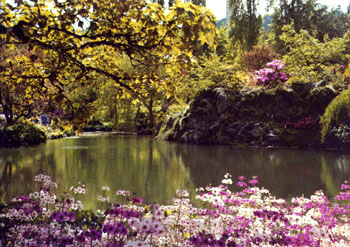
Spring - a magnificent drama of rebirth that occurs every year in nature and speaks of its omnipotent Creator
|
This “coincidence” defended by evolutionary theory is clearly impossible for anyone who has good sense. The extraordinary order and beauty of Spring can only be explained when one imagines that a Supreme Wisdom and a Perfect Beauty has planned and kept in motion this cycle as a reflection of His own Sanctity and out of love for man, to make him a participant of His own happiness.
Could it be that all the marvels of Spring are there to entice us, to encourage us to find the mind of the Creator in the Creation? By finding His reflection in the world around us, we will be stimulated to love and admire Him more, and go forward in our struggle to see Him face to face.

Glory Prayer
O my soul, glorify the Lord Thy God; acknowledge His goodness; eternally proclaim His mercy. But how can I praise Thee worthily, O Lord?
Ye heavens and earth, assist me in offering thanksgiving to my God; ye flowers, lend me your perfumes; ye trees, bend down your tops; ye mountains, burn like holocausts.
O, that I could convert the entire universe into one cathedral, and fill it with my voice, in order to celebrate the praises of my God and Savior.
Mary, my tender Mother, lend me thy heart with which to love Him. Ye blessed angels, lend me your fervor; all ye saints, come to my aid.
| 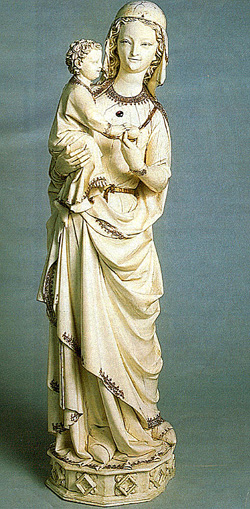 |
|

Posted on April 12, 2004
Symbolism | Religious | Home | Books | CDs | Search | Contact Us | Donate

© 2002- Tradition in Action, Inc. All Rights Reserved
|
 |
|
